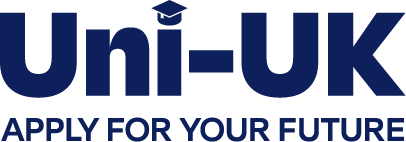Expert Tips How to Make a Resume for University Application

Key Takeaways
- A university application resume showcases academic readiness and campus contribution in a single, concise document.
- Segmenting achievements under clear headings—academics, extracurriculars, leadership—improves reviewer comprehension.
- Tailoring content to each program through targeted keywords and relevant projects signals genuine interest.
- Supporting materials such as cover letters, CVs, and letters of intent offer deeper context when crafted with equal precision.
- Proofreading and a structured final checklist ensure professionalism and bolster admissions confidence.
Crafting a concise, targeted resume can be the decisive factor that turns an application into an offer. Prospective students who present accomplishments with clarity and strategic focus signal the readiness universities seek.
Understanding the Purpose of a University Application Resume

A
university application resume serves as your academic calling card,
presenting qualifications in a concise format that admissions officers can scan in seconds. It highlights achievements that prove you are ready for the intellectual demands of post-secondary study and able to enrich campus life through leadership, research, and community involvement. Using clear structure and tailored language for your university application resume becomes an exercise in showing fit, not just listing facts.
“A university application resume serves as your academic calling card, presenting qualifications in a concise format that admissions officers can scan in seconds.”
Key Components of an Effective University Application Resume
Academic Achievements
Grades and course selections reveal both rigour and consistency. Reference grade-point averages only when they strengthen your candidacy, and pair them with the most challenging courses completed. Showcase honours, dean’s list recognition, and relevant academic awards. This section demonstrates readiness for advanced study.
Extracurricular Engagement
Universities value applicants who contribute beyond the classroom. Highlight sustained involvement in clubs, volunteer roles, or sports that illustrate initiative and commitment. Emphasize measurable outcomes such as hours served or events organized. A well-rounded profile signals the capacity to balance academics with community life.
Leadership Roles
Positions such as team captain, club president, or project lead display strategic thinking and accountability. Use active verbs to describe initiatives launched and results achieved. Admissions reviewers look for evidence that you can motivate peers and manage responsibility. Strong leadership narratives set you apart from applicants with similar grades.
Skills and Certifications
Technical skills—coding languages, laboratory techniques, or industry software—show immediate value to faculty supervisors. Complement them with soft skills like time management or public speaking, framing each skill with a brief context of use. Include certifications (e.g., First Aid, language proficiency) that validate your expertise. This section underlines practical readiness for research or group projects.
Supporting Documents
Reference items such as portfolios, published articles, or competition entries that reinforce your profile. Provide concise links or appendix titles so reviewers can verify accomplishments quickly. Thoughtful curation avoids overwhelming the reader and aligns every attachment with program expectations. The right evidence elevates your credibility.
Common Mistakes to Avoid in Your University Application Resume

Admissions teams scan hundreds of resumes each season. Small errors can overshadow impressive experiences.
- Overcrowded formatting: Busy layouts hide key information and strain the reader’s attention.
- Generic objectives: Vague statements waste valuable space and fail to prove program fit.
- Inflated accomplishments: Exaggeration damages trust when references cannot confirm claims.
- Irrelevant experience: Part-time roles unrelated to academic goals divert focus from stronger points.
- Missing metrics: Achievements without numbers lack impact and feel unsubstantiated.
- Spelling or grammar errors: Proofreading lapses suggest limited attention to detail.
- Inconsistent tense or style: Mixed formatting interrupts flow and appears careless.
Correcting these pitfalls strengthens clarity, builds confidence with the reviewer, and supports the message that you understand how to make a resume for university application that speaks directly to admission priorities.
Tips for Tailoring Your Resume to Specific University Programs
Research Program Requirements
Examine official course pages and note highlighted attributes such as research focus, industry partnerships, or professional accreditation. Adapt descriptions in your resume to echo those priorities, demonstrating alignment without copying phrasing. This targeted approach shows genuine interest.
Align Keywords with Course Outcomes
Faculty members often scan for subject-specific terminology. Identify keywords in module descriptions—laboratory techniques, statistical software, or artistic media—and weave them naturally into bullet points. Strategic keyword placement boosts visibility during digital screenings.
Showcase Relevant Projects
Capstone projects, science fairs, or entrepreneurial ventures reveal initiative and subject mastery. Summarize objectives, processes, and results in four concise sentences, emphasizing learning outcomes that match program themes. Effective project narratives illustrate depth of engagement.
Reflect Career Goals
Conclude the resume with a brief profile statement linking university study to long-term ambitions. Explain how particular program features—clinical placements, pro bono legal clinics, or design studios—advance those goals. Admissions reviewers appreciate applicants who articulate clear trajectories.
Repeating this tailoring process for every application reinforces your grasp of how to make a resume for university application that resonates with each admissions committee.
How to Write a Cover Letter for a University Application

A cover letter complements the resume by framing your story in a personable, persuasive voice. Address it to the admissions tutor when possible, opening with a vivid one-sentence summary of your academic purpose. Expand on one or two achievements that illustrate motivation for the program, citing specific professors, labs, or facilities that attract you. Conclude with a courteous statement of readiness to contribute to campus initiatives. Practising how to write a cover letter for a university application in this focused style shows maturity and research skills.
How to Write a CV for University Application
For postgraduate or research-heavy programs, a curriculum vitae (CV) extends beyond a resume’s brevity. Organize sections chronologically: education, research experience, publications, presentations, and professional affiliations. Provide full bibliographic details for articles and conference papers. Emphasize methodology expertise, funding secured, or datasets managed. Mastery of how to write a CV for university application signals preparedness for scholarly collaboration and independent inquiry.
How to Write a Letter of Intent for University Application
A
letter of intent outlines academic interests and explains why a particular institution provides the ideal setting. Begin with a focused thesis statement that links previous study to future objectives. Discuss faculty research that intersects with your own interests, demonstrating familiarity with current projects. Detail proposed contributions, such as research questions or creative themes, and reference facilities or labs essential to your plan. Understanding how to write a letter of intent for a university application proves strategic thinking and alignment with institutional priorities.
“Tailoring content to each program through targeted keywords and relevant projects signals genuine interest.”
Final Checklist Before Submitting Your University Application Resume

Finishing touches safeguard the professionalism of your submission.
- Verify contact details: Ensure phone number, email, and LinkedIn URL are current.
- Match file naming conventions: Use an ordered format such as Lastname_Firstname_Resume_2025.pdf.
- Confirm document length: Keep to one page for a resume, two pages for a CV unless guidelines differ.
- Cross-check dates: Align timelines across resume, cover letter, CV, and application portal.
- Embed accessible links: Test portfolio or publication hyperlinks for accuracy.
- Review formatting consistency: Standardize fonts, headings, and spacing.
- Save as PDF: Preserve layout when reviewed on multiple devices.
Running through this checklist elevates quality and reinforces mastery of how to make a resume for university application that meets professional standards.
University applications are more than just paperwork—they’re the key to unlocking your academic future. At
Uni-UK, we simplify the process, providing expert support at every step to help you secure your ideal university placement.
FAQs
What length is ideal when learning how to make a resume for university application?
One page suffices for undergraduate applications, while graduate programs may permit two pages if research experience warrants additional detail.
How can I integrate certifications without overcrowding the document?
List only those certificates that directly strengthen candidacy—such as language exams or first-aid training—and provide awarding bodies plus completion dates.
Does formatting style affect automated screening systems?
Clear headings, consistent bullet points, and standard fonts improve parsing accuracy, helping resumes reach human reviewers intact.
When practising how to write a cover letter for a university application, should I repeat my resume?
Focus on one or two achievements that illustrate motivation rather than restating every point; fresh context keeps the reader engaged.
Is a letter of intent different from a personal statement?
A letter of intent emphasizes specific research or professional aims, whereas a personal statement often covers broader life experiences and motivations.
Blog






